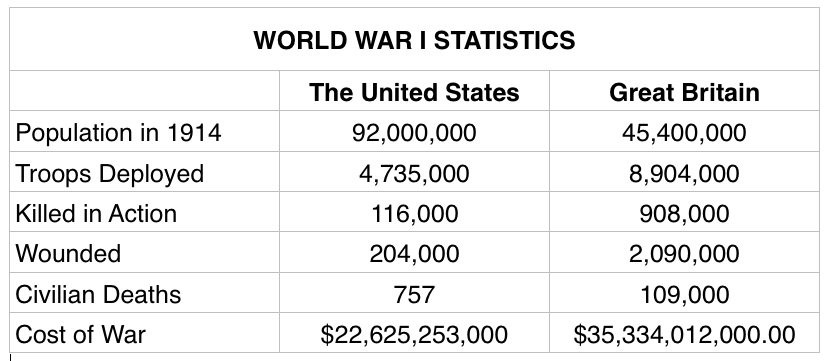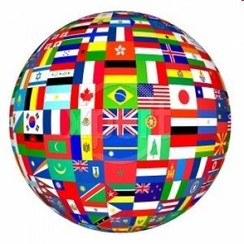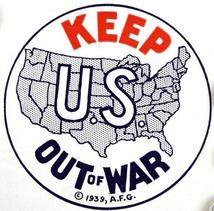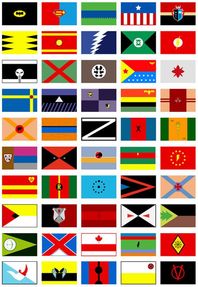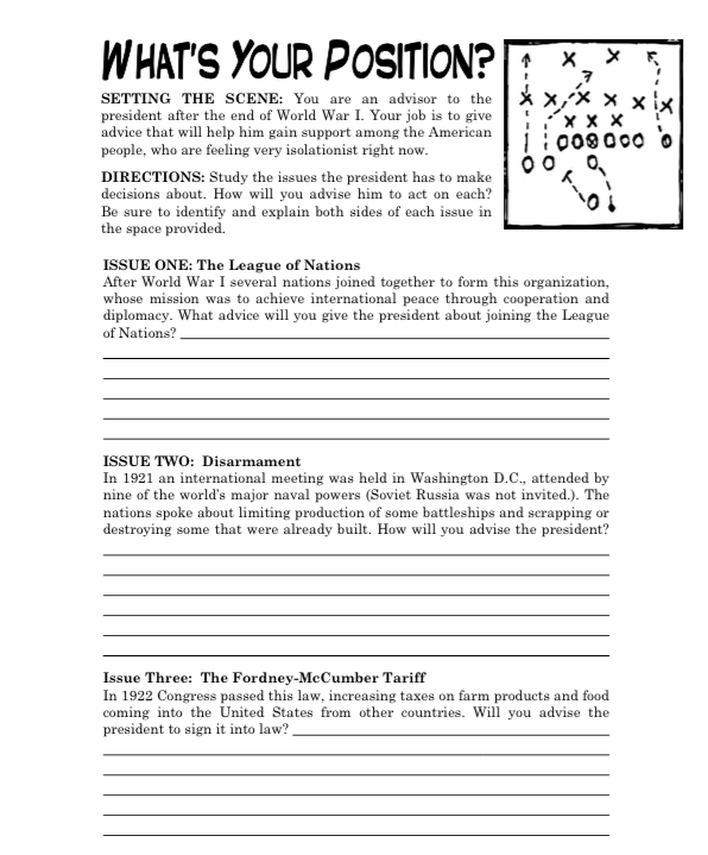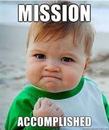Unit 4: The 1920s and 1930s
Lesson 1: Return To Isolationism
FOCUS ACTIVITY
I Can Do It!

I can explain American isolationism after World War I.
TEACHING ACTIVITY
PART 1: Recalling Prior Knowledge
DIRECTIONS: In this activity, you will use the graph below to answer the poll questions below it. I will read each question to the class and you will select the answer in the poll that you think is correct.
|
QUESTION #1
|
QUESTION #2
|
|
QUESTION #3
|
QUESTION #4
|
PART 2: Using Prior Knowledge to Gain New Knowledge
WHOLE GROUP ACTIVITY
Guided Reading

DIRECTIONS: We are now going to read today's text as a class. Remember to follow along. I will select readers randomly by calling out numbers. Important terms, people, places, and events are highlighted in the toolbox.
AMERICAN FOREIGN POLICY AFTER WORLD WAR I
IMMIGRATION QUOTAS
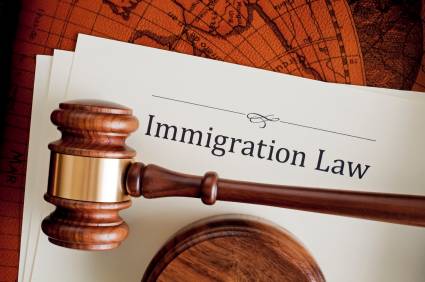
Another way Americans demonstrated that they wanted to be isolationists was by creating laws to stop mass immigration to the United States. Americans wanted other nations to just "stay out!" The Immigration Act of 1917 was the first federal law to make immigrants take a literacy test. It also limited the immigration of Asians to the United States. The Immigration Act of 1921 was the first federal law in U.S. history to limit the immigration of Europeans. Americans feared that people from southern and eastern European countries did not adapt well into American society and were the reason for many American problems. The law set a limit on the number of southern and eastern Europeans that could come to America each year.
DISARMAMENT
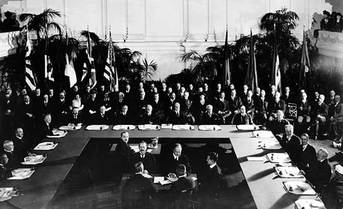 The Washington Naval Disarmament Conference 1921
The Washington Naval Disarmament Conference 1921
In 1921, nine of the world’s largest naval powers gathered in Washington for a conference to discuss naval disarmament. Disarmament is reducing the size of a nation's military or weapons. The nations spoke about limiting the number of battleships they had as a way to prevent the possibility of another war. Several treaties were written and were considered a major success during their time, but historians today realize the treaties were basically useless because nations found ways around them. The treaties focused on reducing battleships and did not really reduce the amount of money that navies could spend. So nations put their money into different ships like cruisers, destroyers, and submarines. These treaties also created a naval air arms race because navies began spending money to create aircraft carriers. For the time being however, nations felt satisfied and at peace with the treaties that they had created.
THE FORDNEY - MCCUMBER TARIFF
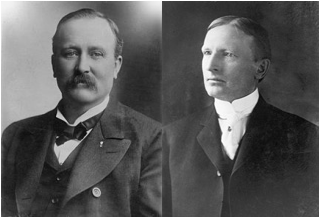 Joseph Fordney and Porter McCumber - the Congressmen who wrote the Fordney-McCumber Tariff
Joseph Fordney and Porter McCumber - the Congressmen who wrote the Fordney-McCumber Tariff
In 1922, Congress passed a law called the The Fordney–McCumber Tariff that raised tariffs on foreign imported goods in order to protect American factories and farms. They hoped it would help the American economy and for a short time it did help farmers. European nations became angry about the tariff. It made it harder for them to make money in order to pay back war debts. Many European nations began to raise their tariffs on American goods in response. Some American businessmen did not like the tariff either. Automobile manufacturer, Henry Ford said that the tariff hurt his sales and wanted Congress to get rid of it. After the Stock Market Crash of 1929, the tariff was revised.
SMALL GROUP ACTIVITY
Advisor to the President
DIRECTIONS: In this activity, you are an advisor to the president after the end of World War I. Your job is to give advice that will help him gain support among the American people, who currently feel a strong sense of isolationism. You just read about some of the major issues above. Study these issues that the president has to make decisions about and record your research and final answers on the worksheet provided below.
INDIVIDUAL ACTIVITY
Exit Pass
DIRECTIONS: In this activity you answer prove that you have met the Lesson Mission by answering the essential question of the lesson. Please complete the exit pass below. This question is worth 10 points and is graded for accuracy. You MAY use the reading and any notes you took.
HOMEWORK
Finish the Lesson and Family Time
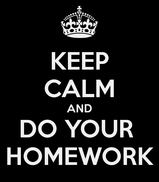
Remember, you have homework every night in Social Studies. First, share with your family what you learned in class today. Second, review your exit pass response to each lesson and the lesson vocabulary to help you study for the test.
